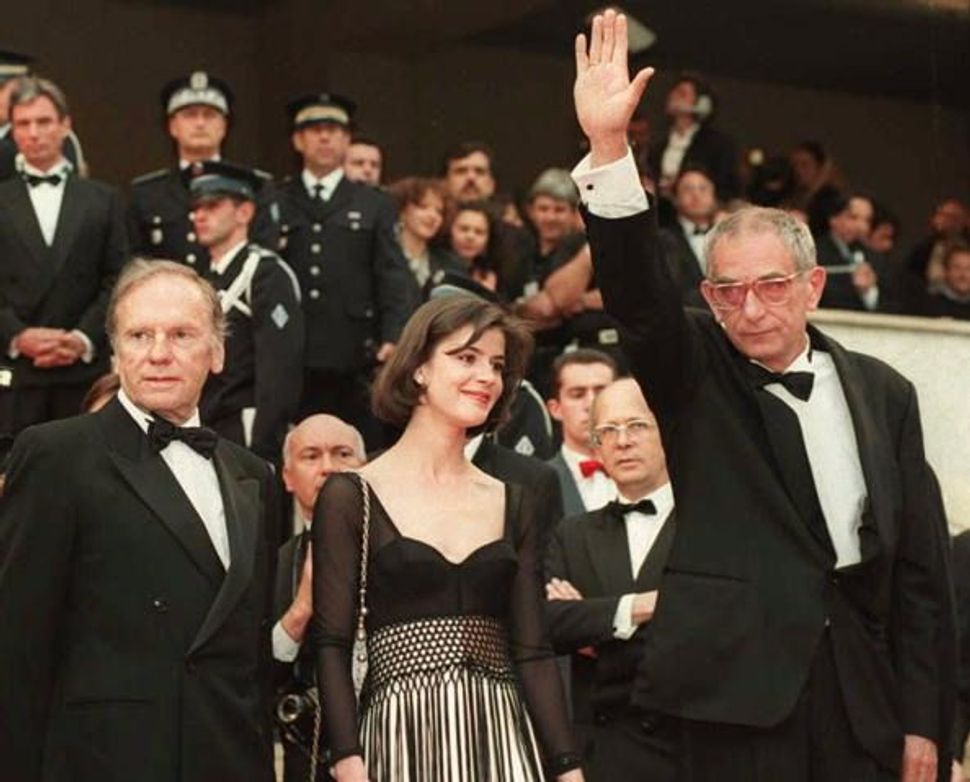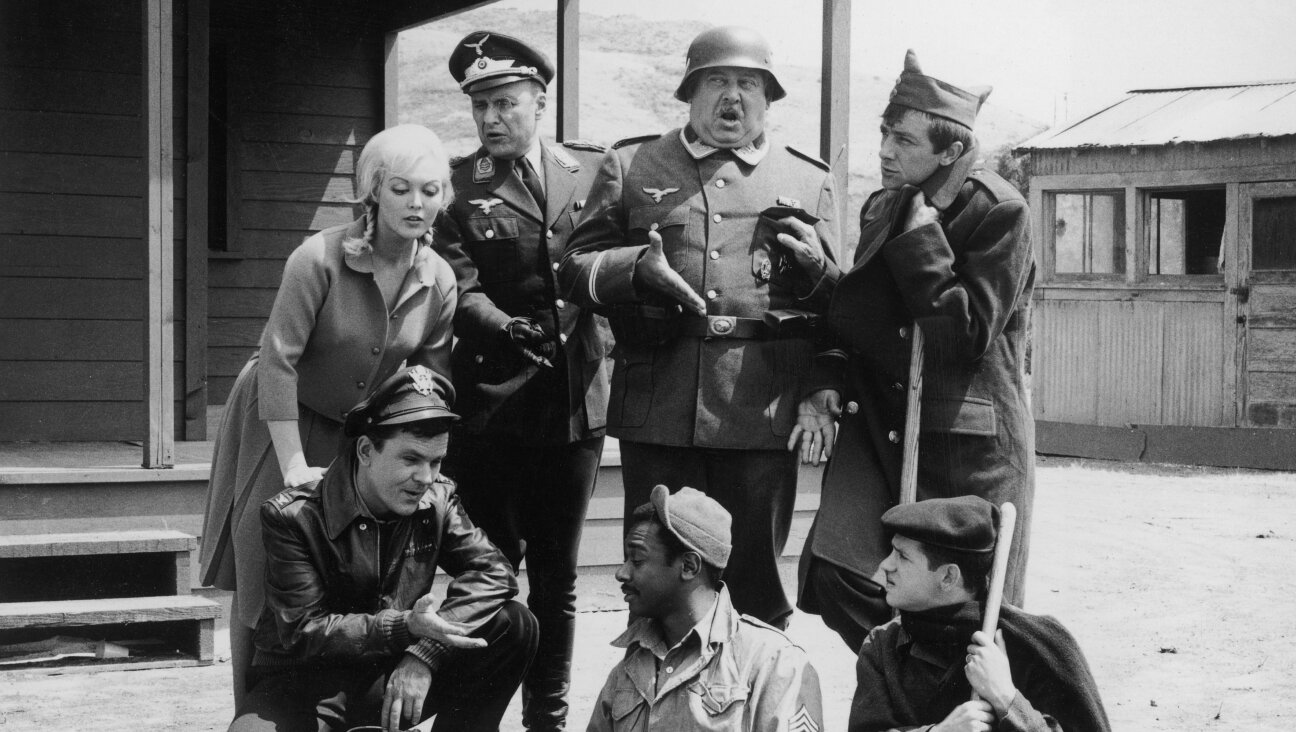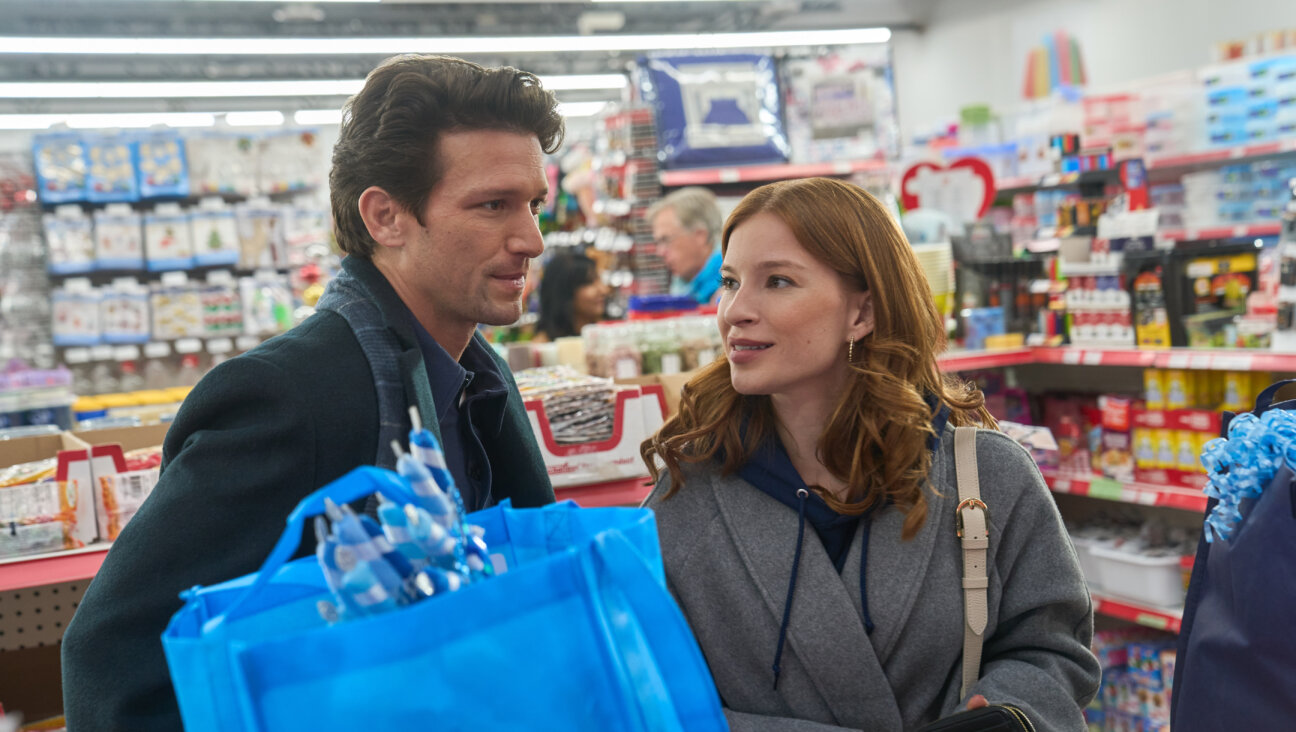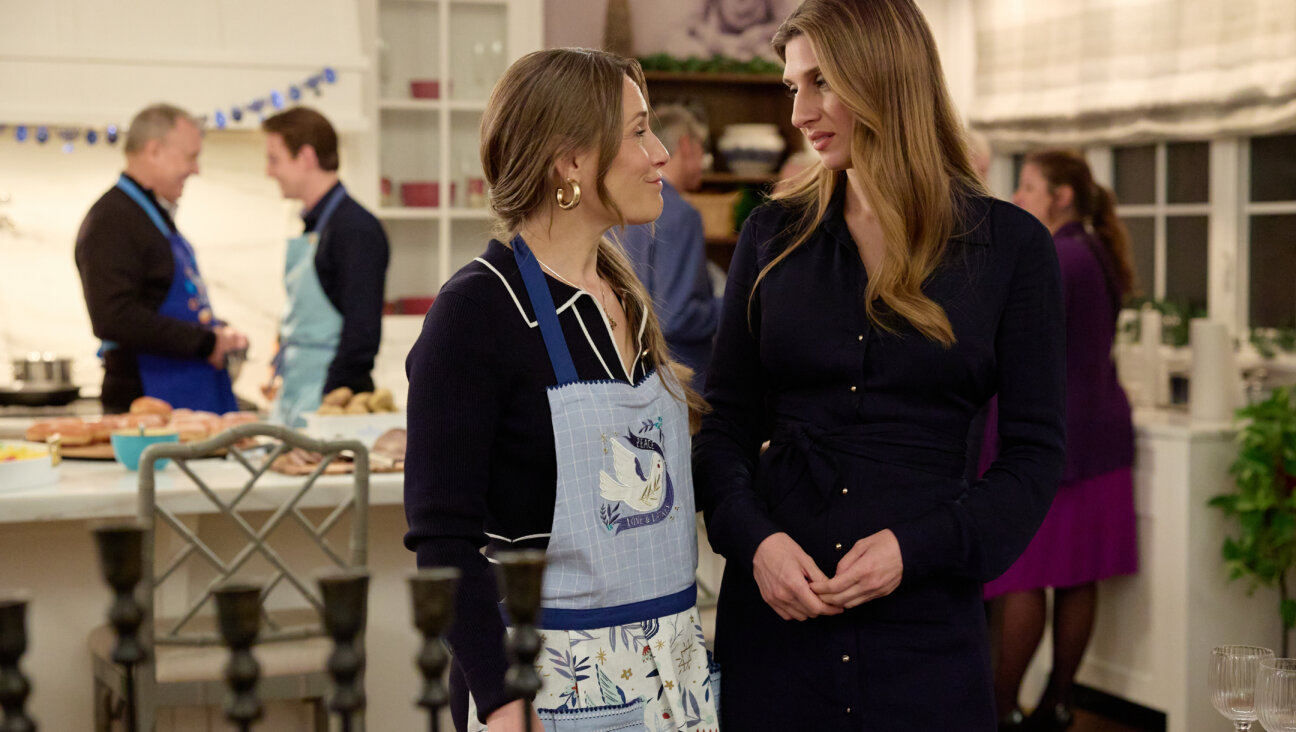This Movie Masterpiece Will Make You Rethink the Ten Commandments

Image by Getty Images
In the spring of 1998, it seemed as if the meandering, directionless years of my life were over, and I was about to arrive in the promised land. I had been accepted to film school.

Image by Facets
USC sent me a list of films that I was to watch before classes started in the fall. Many were obscure or difficult to obtain. I wasn’t really expected to be able to see most of them; the point of the list was to humble me before I entered those hallowed halls.
If I had to name one item on that list that was definitely put there purely as a taunt, it would be the Dekalog. The ten-hour masterpiece by director Krzysztof Kieslowski, released in Poland in 1989, had not yet been transferred to NTSC, the format used by all American-made devices. But Scarecrow Video, a movie buff Valhalla in Seattle, where I was living, had it in the European PAL format. To enable me to view it, they also rented me a portable PAL TV/VCR, about the size and shape of one of the earliest Macintosh computers. I took it home and awkwardly set it in the middle of the living room, partially blocking my view of a much larger NTSC screen. There it stayed until I had watched the entire series: my first video binge. I had never seen anything like it.
With its ugly lead actors and the drab apartment complex where most of the action takes place, the story is so grounded in the reality of late 1980s Warsaw that it often feels like a documentary. But that gritty facade masks an intricate structure that puts “Inception” to shame. As I struggled to absorb the feature-length plots stuffed into hour-long segments, overlapping yet autonomous storylines, and the seemingly disparate themes subtly woven together, building to a crescendo that was satisfying without being cathartic, I realized that I was watching something unique.

Image by Facets
The word “dekalog” dates back to the Septuagint, the first comprehensive Greek translation of the Torah, in the 3rd century BCE. It translates roughly to “ten rules” or “ten principles,” but is understood to refer to the Ten Commandments.
Kieślowski’s “Dekalog” is a story in ten parts, and he has said that it was inspired by the rules revealed on Mt. Sinai. However, there is no direct one-to-one correlation. In fact, Kozlowski was famously annoyed when the programmers of the Venice Film Festival, where the films debuted, added special titles to each one in an attempt to clarify which films corresponds to which commandments.
Kieślowski’s complex and nuanced exploration of those ten principles, and the way they relate to one another, has a lot in common with Jewish scholarship and tradition.

Image by Facets
The Hebrew phrase for the Ten Commandments in Exodus translates more accurately to “the ten sayings.” To be sure, each of the ten items is an imperative. But according to some scholars, each saying is intended as a summary of other rules given elsewhere. In this view, each of the 613 mitzvot – none of which are to be taken more or less seriously than any other – falls under the heading of one of the ten sayings. The tablets were a sort of scholarly abstract, or executive summary.
The Dekalog has this quality. Despite being ten hours long, we, the viewers, are made to feel that we are being given a tiny window into the lives of complex characters. The further into the series we get, the more we feel a part of their world, and the more we appreciate the moral complexity of the universe we are visiting.

Image by Facets
In Talmudic terms, there is a difference between halakha (law) and aggadah (narrative), though they may both be used to explicate the same ideas, and may even occur in the same context. Kozlowski’s Dekalog is an aggadah. Like the pools of commentary swirling around the Mishna, these ten stories seek to contribute to, rather than conclude, the conversation about the right way to live.
In “Dekalog: One,” A little boy, Paweł (Wojciech Klata), and his father, Krzysztof (Henryk Baranowski), a teacher, spend a lot of time putting questions to their personal computer. The computer is an oracle to them, but it’s also a stand-in for the absent mother. Paweł types in her daily routine, and then queries to find out what she’s doing at a particular time. Krzysztof talks to the computer out loud. He gives his class an optimistic lecture on artificial intelligence. Also, the computer starts switching on by itself.

Image by Facets
Spoiler alert: Moses never makes it to Canaan. Also, I’m about to reveal the end of “Dekalog: One” (and soon, “Dekalog: Two”). But either you’re the type of person who will never watch a ten-hour movie anyway, or you are, in which case you’ll find that what I reveal here is just the tip of the tabernacle.
Is Paweł guilty of not honoring his mother (Commandment #5)? Also, Krzysztof goes on dates; we see him putting on cologne. Perhaps the sin in question is adultery. Yet his real love seems to be the computer, which is arguably an idolic god-figure (#1 and #2).

Image by Facets
The lake nearby the ubiquitous apartment complex is frozen over. Paweł wants to go skating on it. The father consults the computer, which assures him that the ice will hold. It breaks, and the child dies.

Image by Facets
After the boy’s death, the father goes to a Catholic church. We think he’s going to pray and repent. (That’s what would happen in a more traditional, pedantic work of fiction based on a reductive religious doctrine.) But instead, he wrecks the altar.

Image by Facets
Is he mad at God, himself, or the absent mother? Does he see her face when he looks at the image of Mary? Is he angry at the whole interlocking system of theological symbols, and at his own inability, as a mere human, to actually know anything for sure?
We are meant to wonder. Confused by the message but moved by the tragedy, we continue the journey. With each episode, we become more emotionally raw. We stop worrying about gleaning a specific message, and start trusting the process.

Image by Facets
Visualize the proverbial stone tablets, and then imagine reading them across, rather than up and down. So first you read commandments #1 and #6, then you read #2 and #7, etc. There is a Talmudic idea that this might be the actual way to read them. In this view, there are actually only five commandments, which would go something like this:
I. I am the Lord your God. Don’t murder people made in my image.
II. You shall have no other gods, nor other sexual partners apart from your spouse.
III. Do not take a) God’s name in vain b) other people’s property.
IV. Honor the sabbath and don’t dishonor yourself by bearing false witness.
V. Honor your parents by not stealing your neighbor’s possessions.
Maybe the esteemed commentator who came up with that idea really believed it. Or maybe, like Kieślowski, he was just trying to say that no single ethical idea stands alone. Each is necessarily part of a web of perspectives.
In “Dekalog: Two,” a woman, Dorota (Krystyna Janda), confronts her husband’s doctor (Aleksander Bardini), who lives in her building. She’s hoping that he’ll tell her whether her husband is going to live or die. She is pregnant, but not with her husband’s baby. If he’s going to live, she’ll have an abortion. If he’s going to die, she’ll carry the child to term.
Standing at the door of the doctor’s apartment, she asks him if he knows who she is.
He responds: “You ran over my dog two years ago.”
She stands there staring at him. We, the audience, hold our breath, waiting for the dog story to become relevant.
But it won’t. It’s only there to remind us that no situation is as simple as it seems. She loves her husband; he loved his dog. Is he wrong to resent her for not mentioning the dog first? Even the protagonist in a piece of fiction is not the center of her universe.

Image by Facets
Later, trying to draw out the doctor’s humanity, the woman asks him if he believes in God. The doctor replies that he does, but it’s a personal god, with no room for anyone but him. At the time, this sounds selfish and myopic. But it turns out to mean that he has a self-directed morality that is difficult to argue with. He misses his own lost child, and so he feels that every birth is sacred. So he lies and tells her that her husband is dying. Is he wrong to do this? She has, after all, asked him to make the decision for her.
In the wake of the heartbreaking death of the child in Part One, the audience is further motivated to sympathize with the doctor’s lie, lest this turn into ten hours of stories about dead children. (It doesn’t.) The woman has committed adultery, and now arguably wants to commit murder. The doctor has coveted his neighbor’s life, and has created a god in his own image. Kieślowski has tricked us into asking “Which commandments are being broken here?” But that’s really just a clever way to prompt secular viewers to ask themselves the more troubling question: Is there really such a thing as right and wrong?

Image by Facets
One senses that, in Kieślowski’s universe, there is. But it’s buried under the weight of the unpredictable complexities of real life. We struggle to find it in his stories. It’s in there somewhere, the director seems to be saying. Keep looking. If we can find our own moral compass inside this eerily realistic artifice, then perhaps we can find it elsewhere.

Image by Facets
Watching the series again this year, I was reminded of Jewish (atheist) American speculative fiction writer Isaac Asimov, and his Three Laws Of Robotics. The three laws, conceived in the 1940s, have influenced both other storytellers and actual scientists for many years. If you squint as you read them, you may see a consolidated version of the Ten Commandments:
- A robot may not harm a human being, or allow a human to come to harm.
- A robot must always obey a human, unless the order conflicts with the first law.
- A robot must protect itself, unless doing so conflicts with either of the first two laws.

Image by Facets
These laws appear to be straightforward, but Asimov built much of his career on the construction of scenarios in which they are broken. The robots, not being people, cannot be presumed to know right from wrong intuitively. The reader therefore forgives them for coming up with creative rationale for doing the wrong thing. Like most science fiction scenarios, this one is less about technology than it is about people. The reader is compelled to ask himself: When is it acceptable to kill? To defy authority? To do self-destructive things?

Image by Facets
With the Dekalog, Kieślowski does something similar, but instead of making up a set of arbitrary moral rules to break down, he uses the ones we already know about. Instead of robots who don’t recognize the spirit of the law, he uses human characters who are all spirit, unable to achieve moral clarity in spite of their efforts to do so.
In “Dekalog: Five,” a disturbed young man (Mirosław Baka) gazes intently at a rock, as he slowly pushes it off of an overpass, wreaking havoc on the road below. In “Dekalog: Six,” a heartsick woman (Grażyna Szapołowska) stares intently at a container of milk, as she slowly pushes it off the kitchen counter, sending it crashing to the floor. Our levels of sympathy for these characters is vastly different, yet Kieślowski forces us to consider their sameness. They are both people. They both feel loss. He is not a monster. She is not pathetic. We can’t help but imagine him in the kitchen. Her on the bridge.

Image by Facets
In “Dekalog: Eight,” a philosophy professor, Zofia, (Maria Koscialkowska) asks her class to posit an ethical dilemma for discussion. One student rises, and describes the plot of “Dekalog: Two.” But this is no ordinary “story within a story” trick. Zofia acknowledges that the story is true, that she’s heard it herself, that everybody in Warsaw knows about it. So the audience now senses that they are not watching this movie alone, as it were; the characters in the stories are watching it with them, aware of their own history. How much does it matter to the philosophy class that the story “really happened”? I use quotes, because to us, both episodes Two and Eight occupy the same plane of existence. But these lines are meant to blur. The parable, the aggadah, is the lesson. The characters within it understand that. We, the viewers, are meant to carry the torch.
In the traditional Exodus narrative, Moses comes down from Mt. Sinai with the tablets, but smashes them in anger when he sees the golden calf. Later, there are two more tablets made. The intact tablets and the fragments of the original set were all put in the ark.
But, as The Dekalog shows us, the fragments actually tell a more interesting story. Which is why I won’t summarize the rest of the episodes. Part of the intended experience is to be dazed by the strange shifts in plot and tone.

Image by Facets
As my latest screening of the Dekalog wound down, and I watched the closing credits, I thought of the tablets as they are revealed near the end of Raiders Of The Lost Ark, when the ark is finally opened: mounds of magic dust. The individual rules are mixed with each other, and also with the medium on which they were transmitted. And yet, that collective ancient relic, though indecipherable, still holds an awesome power.
“Don’t look at it!” Indy tells Marion, as the ark destroys Nazis with streams of fire. But if the tablets had emerged in pristine shape, the text perfectly legible, would it have been okay to look? Perhaps they were just powder from the beginning.
Michael Bennett Cohn is a New York-based freelance writer. Follow him on Twitter, @miconian
“The Dekalog” is showing at IFC through October 2.
A new Criterion Blu-Ray edition will be available September 27.
A message from our Publisher & CEO Rachel Fishman Feddersen

I hope you appreciated this article. Before you go, I’d like to ask you to please support the Forward’s award-winning, nonprofit journalism during this critical time.
We’ve set a goal to raise $260,000 by December 31. That’s an ambitious goal, but one that will give us the resources we need to invest in the high quality news, opinion, analysis and cultural coverage that isn’t available anywhere else.
If you feel inspired to make an impact, now is the time to give something back. Join us as a member at your most generous level.
— Rachel Fishman Feddersen, Publisher and CEO























